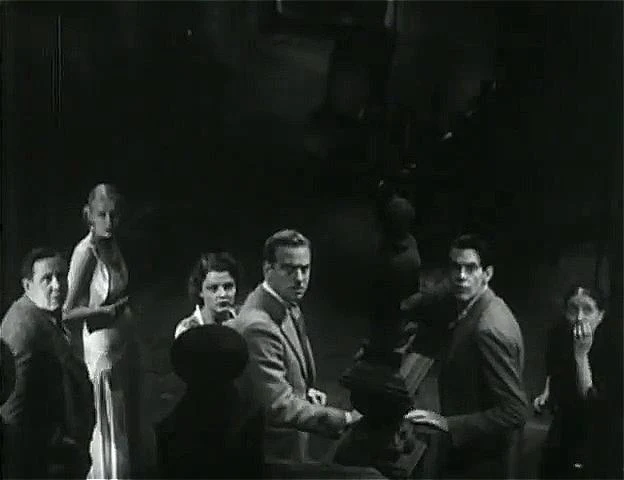.jpg)
The Black Cat (Edgar G. Ulmer, 1934)
Cast: Boris Karloff, Bela Lugosi, David Manners, Julie Bishop, Egon Brecher, Harry Cording, Lucille Lund, Henry Armetta, Albert Conti. Screenplay: Edgar G. Ulmer, Peter Ruric, suggested by a story by Edgar Allan Poe. Cinematography: John J. Mescall. Art direction: Charles D. Hall. Film editing: Ray Curtiss. Music: Heinz Roemheld.
Edgar G. Ulmer’s kinky The Black Cat may have been “suggested by” an Edgar Allan Poe story, as the screen credit says, but the only suggestion Ulmer and co-scenarist Peter Ruric seem to have taken was the title. A cat does appear, and freaks Bela Lugosi’s Dr. Vitus Werdegast out so completely that he kills it – maybe, for it seems to reappear, purring in the cuddling hands of Boris Karloff’s Hjalmar Poelzig, a few minutes later. Otherwise, the movie is an occasion for Universal’s famed horror stars Lugosi and Karloff to appear together and torment each other, and only incidentally to scare the hell out of a pair of newlyweds, Peter (David Manners) and Joan Allison (Julie Bishop, billed under her original name, Jacqueline Wells). The result is a stew (or perhaps goulash, since the setting is Hungary) of satanism, necrophilia, torture, and revenge. Lugosi’s Werdegast is returning to the place where Karloff’s Poelzig betrayed him to the Russians during World War I, and stole his wife while Werdegast was off in the gulag. Thanks to a chance encounter with the newlyweds on the train and a subsequent bus accident, Werdegast and the Allisons wind up at the home of Poelzig, built in the ruins of the fort Poelzig commanded during the war. It has been modernized in a kind of minimalist blend of Bauhaus and Art Deco – lots of glass brick and pocket doors – but there is also a gloomy substructure made out of the old dungeons of the fort. Werdegast and Poelzig meet again with a kind of stiff courtesy, hardly suggesting that Werdegast will eventually skin Poelzig alive. With good reason, for Poelzig has added Werdegast’s wife to his collection of embalmed women that he displays in glass cases, and married Werdegast’s daughter in her place. The Allisons are there only to add some semblance of normality to the whole business. It’s one of the more delirious of the classic Universal horror movies of the 1930s, with some perversities that would not have been allowed under the Production Code.



.jpg)

.jpg)




.jpg)







































